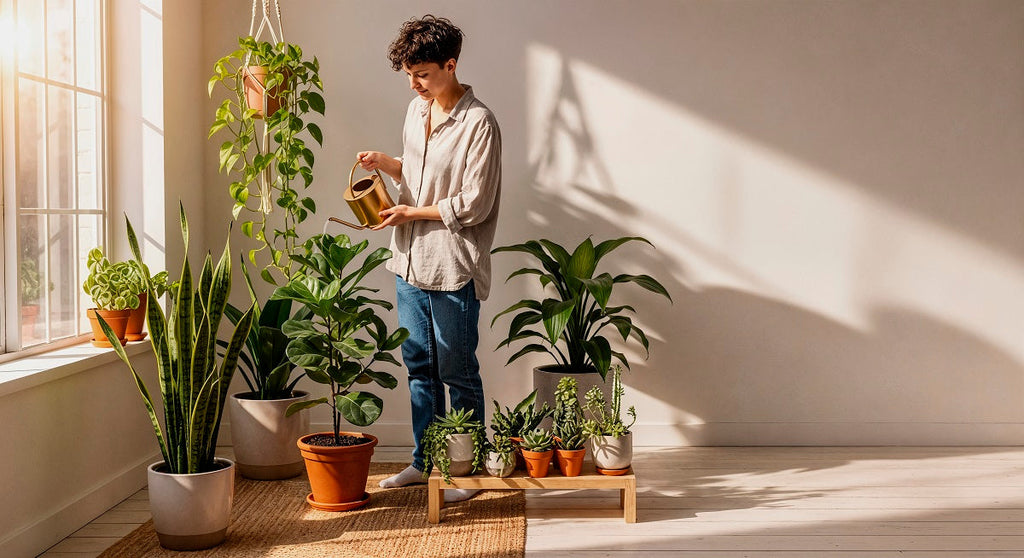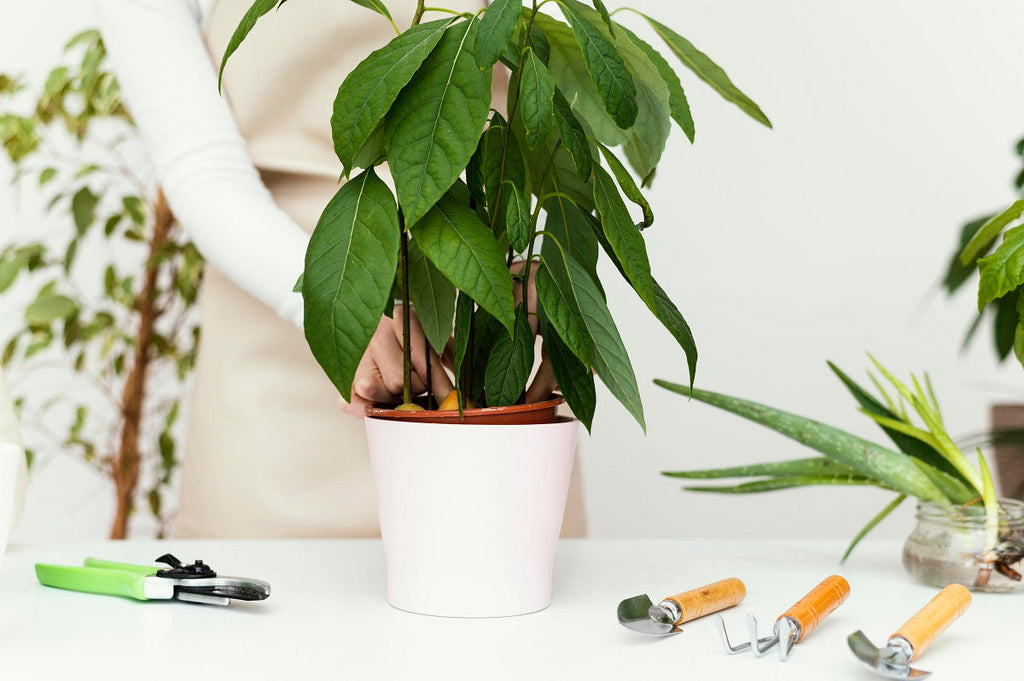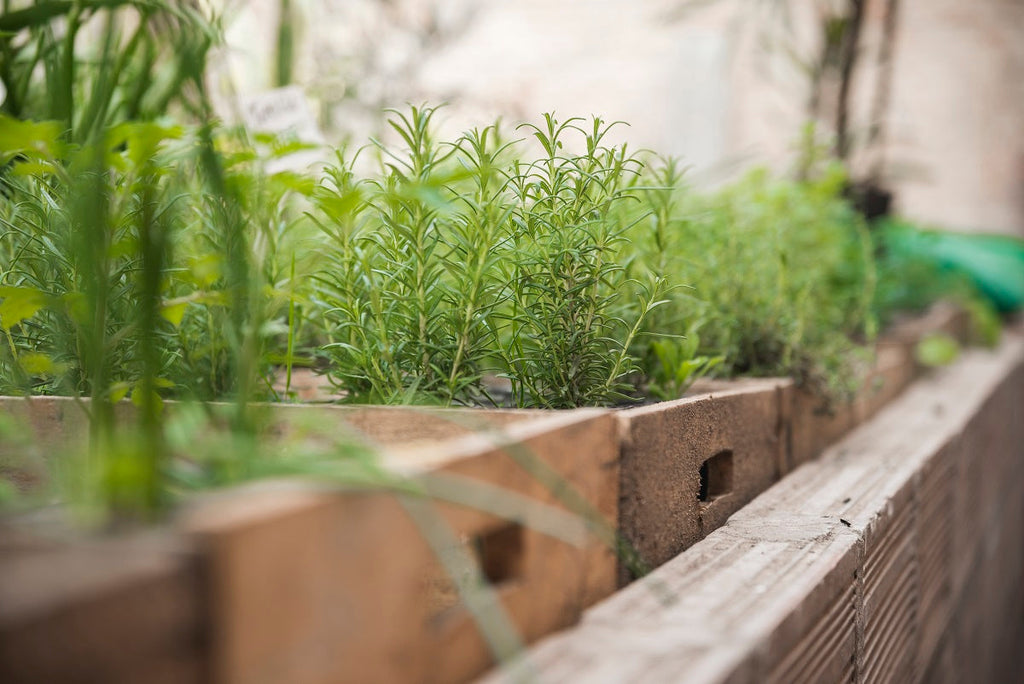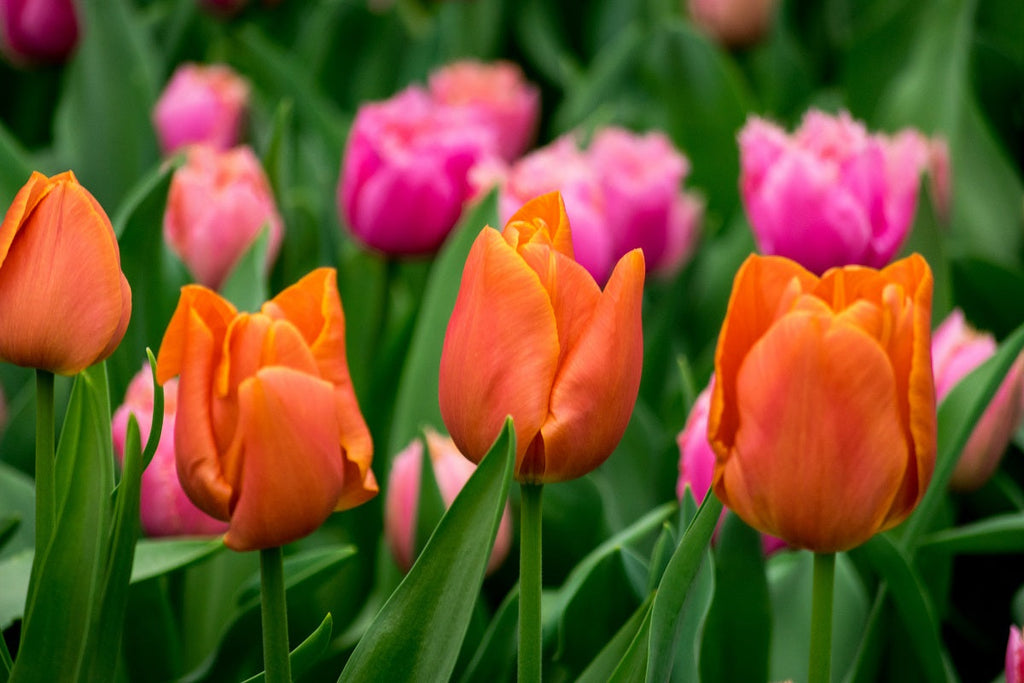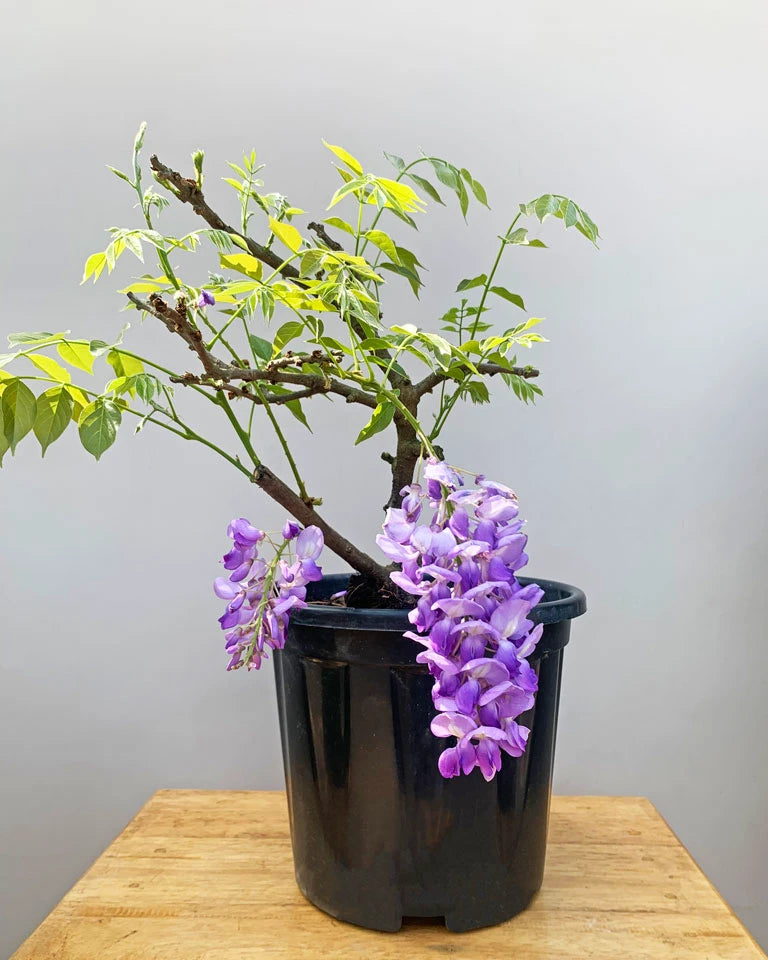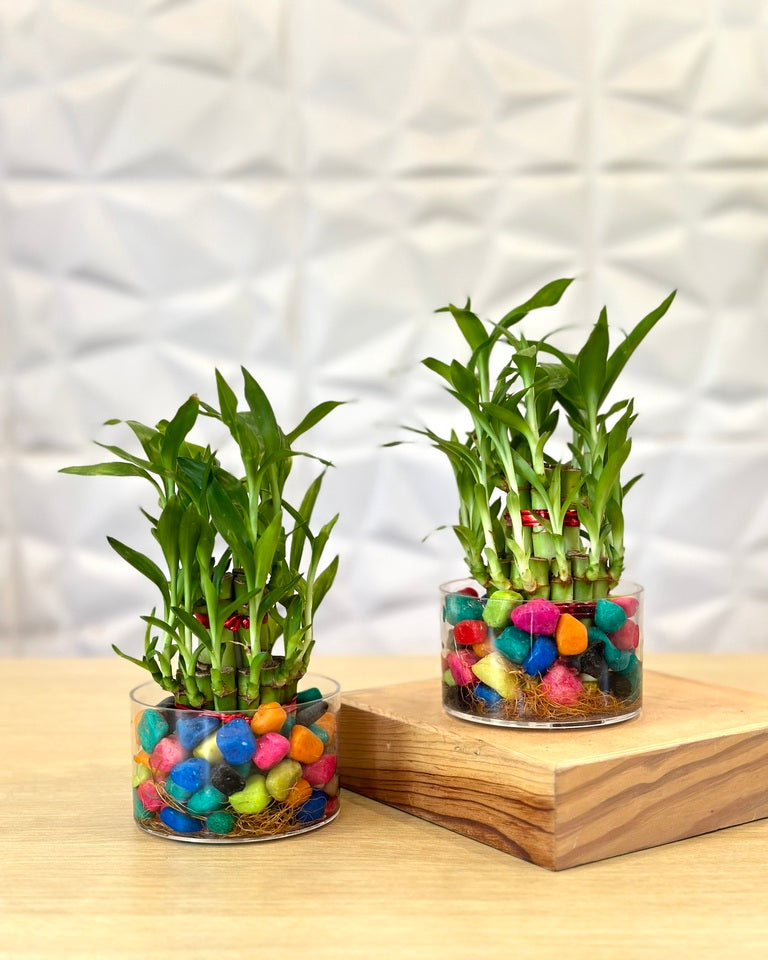
5 Indoor Plants for Oxygen: Which Need Less Sunlight

Indoor plants not only beautify your space but also play a crucial role in improving air quality. Certain plants are especially effective at producing oxygen and thriving in low-light conditions. In this blog, we'll explore five such indoor plants that are excellent oxygen providers and require minimal sunlight. If you're looking to buy plants online or searching for the best online plants in India, these options are perfect for you!
1. Rubber Plant (Ficus elastica)
The rubber plant, scientifically known as Ficus elastica, is renowned for its striking glossy leaves and impressive air-purifying capabilities. Originating from tropical regions, this plant is well-adapted to indoor environments, making it a favorite among plant enthusiasts. Its large, dark green leaves not only add a touch of elegance to any room but also perform a vital function by removing toxins such as formaldehyde from the air. This makes it an excellent choice for improving indoor air quality.
Rubber plants are quite versatile when it comes to lighting. While they prefer bright, indirect light to maintain their vibrant foliage, they are also capable of adapting to lower light conditions, making them suitable for various indoor spaces.
Care Tips:
- Light: Tolerates low light conditions but thrives in moderate to bright indirect light.
- Water: Water when the top inch of soil is dry; avoid overwatering.
- Humidity: Does well in average humidity but appreciates occasional misting.
Facts:
- The rubber plant is known for its ability to convert CO2 into oxygen efficiently.
- It also helps maintain indoor humidity levels, making it a great choice for dry climates.
2. Indoor Areca Palm
The areca palm, also known as Dypsis lutescens and sometimes called the butterfly palm, is a well-liked houseplant with feathery, arching fronds that add a tropical touch to any space. This palm significantly improves air quality in addition to adding aesthetic appeal to any space. Its high efficacy in eliminating airborne pollutants such as toluene and xylene also helps to preserve a healthy indoor environment by raising humidity levels.
The adaptability of the areca palm to various lighting conditions is one of its main advantages. It is a flexible option for a variety of indoor settings because it can withstand low light levels even though it thrives in bright, indirect light.
Care Tips:
- Light: Thrives in bright, indirect light but can adapt to low-light conditions.
- Water: Requires regular watering; keep the soil consistently moist but not waterlogged.
- Humidity: Prefers high humidity; mist occasionally.
Facts:
- The areca palm is one of the most efficient air purifiers among indoor plants, removing toxins like xylene and toluene.
- It can produce up to a liter of water vapor per day, helping to humidify the air.
3. Aglaonema
The Chinese evergreen, or Aglaonema, is praised for its colorful, patterned leaves and ease of maintenance. Because of its resilience and adaptability, this plant is especially well-liked and is a great choice for both novice and seasoned plant owners. It's a great addition to any indoor space because it can survive in low light levels and still help purify the air.
The foliage of Aglaonema adds color to your interior décor with hues ranging from dark green to silver and red. It is very effective at eliminating common indoor air pollutants such as formaldehyde and benzene, which improves the overall quality of the air. Although it is highly adaptive and can thrive in lower light conditions, this plant prefers moderate to bright indirect light.
Care Tips:
- Light: Tolerates low light conditions but thrives in moderate to bright indirect light.
- Water: Water when the top inch of soil is dry; avoid overwatering.
- Humidity: Does well in average humidity but appreciates occasional misting.
Facts:
- Aglaonema is known for its ability to filter air pollutants like benzene and formaldehyde.
- It continues to produce oxygen even in low light, making it perfect for dimly lit spaces.
4. Homalomena
Homalomena is a lesser-known but very potent indoor plant with heart-shaped leaves that are attractive and have air-purifying properties. It is a great option for areas with little natural light because of its capacity to flourish in low light. The dense foliage of Homalomena not only makes your space look better, but it also significantly improves indoor air quality by absorbing volatile organic compounds (VOCs) like xylene and benzene.
This plant needs low to medium light and constant moisture to thrive, but other than that, it's fairly easy to care for. Maintaining the higher humidity levels that Homalomena prefers can be aided by regular misting in order to keep the soil uniformly moist but not soggy. Its durability and ability to purify the air make it a great option for bedrooms.
Care Tips:
- Light: Prefers low to medium light; avoid direct sunlight.
- Water: Keep the soil consistently moist; do not let it dry out completely.
- Humidity: Thrives in high humidity; mist regularly.
Facts:
- Homalomena is excellent at removing volatile organic compounds (VOCs) from the air.
- It is known for its calming effect, making it a great choice for bedrooms and living rooms.
5. Dracaena Fragrans
The Dracaena fragrans, is a favorite among indoor plant enthusiasts because of its unusual appearance and air-purifying properties. It gives a refined touch to any space with its long, arching leaves and graceful form. Because of its ability to eliminate airborne pollutants like trichloroethylene and xylene, Dracaena fragrans is highly prized as a great option for enhancing indoor air quality.
Because it can tolerate low to moderate light, this plant is perfect for a variety of indoor spaces, including living rooms and offices. Though it can tolerate normal indoor humidity levels quite well, Dracaena fragrans occasionally benefits from misting. Because of its high rate of transpiration, the room's humidity levels rise, making the atmosphere cozier.
Care Tips:
- Light: Prefers low to moderate light; can tolerate low light.
- Water: Water when the top inch of soil feels dry; avoid waterlogging.
- Humidity: Adapts well to average humidity levels.
Facts:
- Dracaena fragrans is effective at removing toxins from the air.
- It has a high transpiration rate, which helps to increase indoor humidity levels.
Conclusion
These five indoor plants are not only excellent for oxygen production but also require minimal sunlight, making them perfect for indoor settings. Whether you're looking to improve air quality, add a touch of greenery, or simply want low-maintenance plants, these options have you covered. Don't forget to buy plants online and explore the wide range of online plants to find the perfect addition to your home from unlimited greens.









